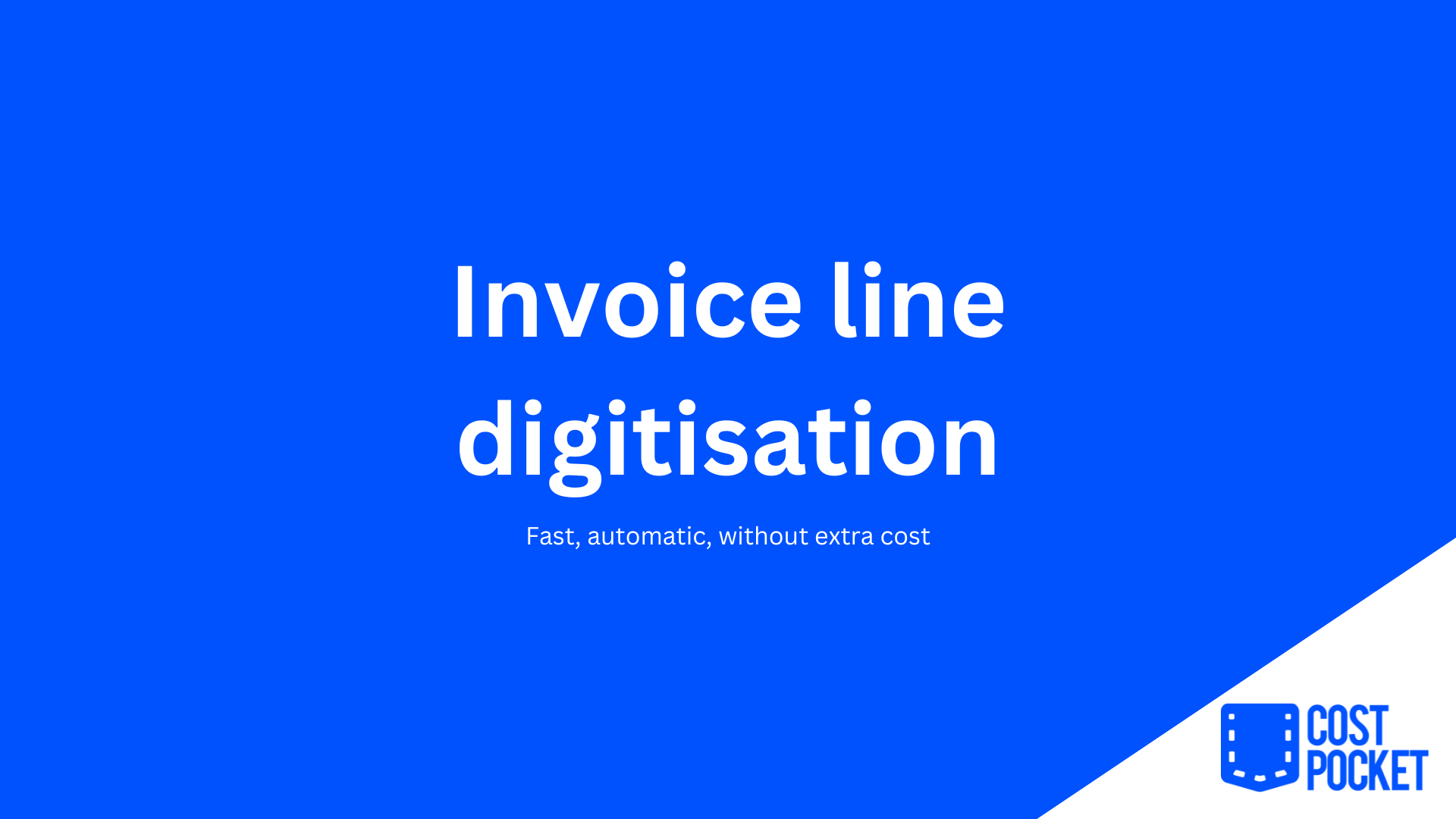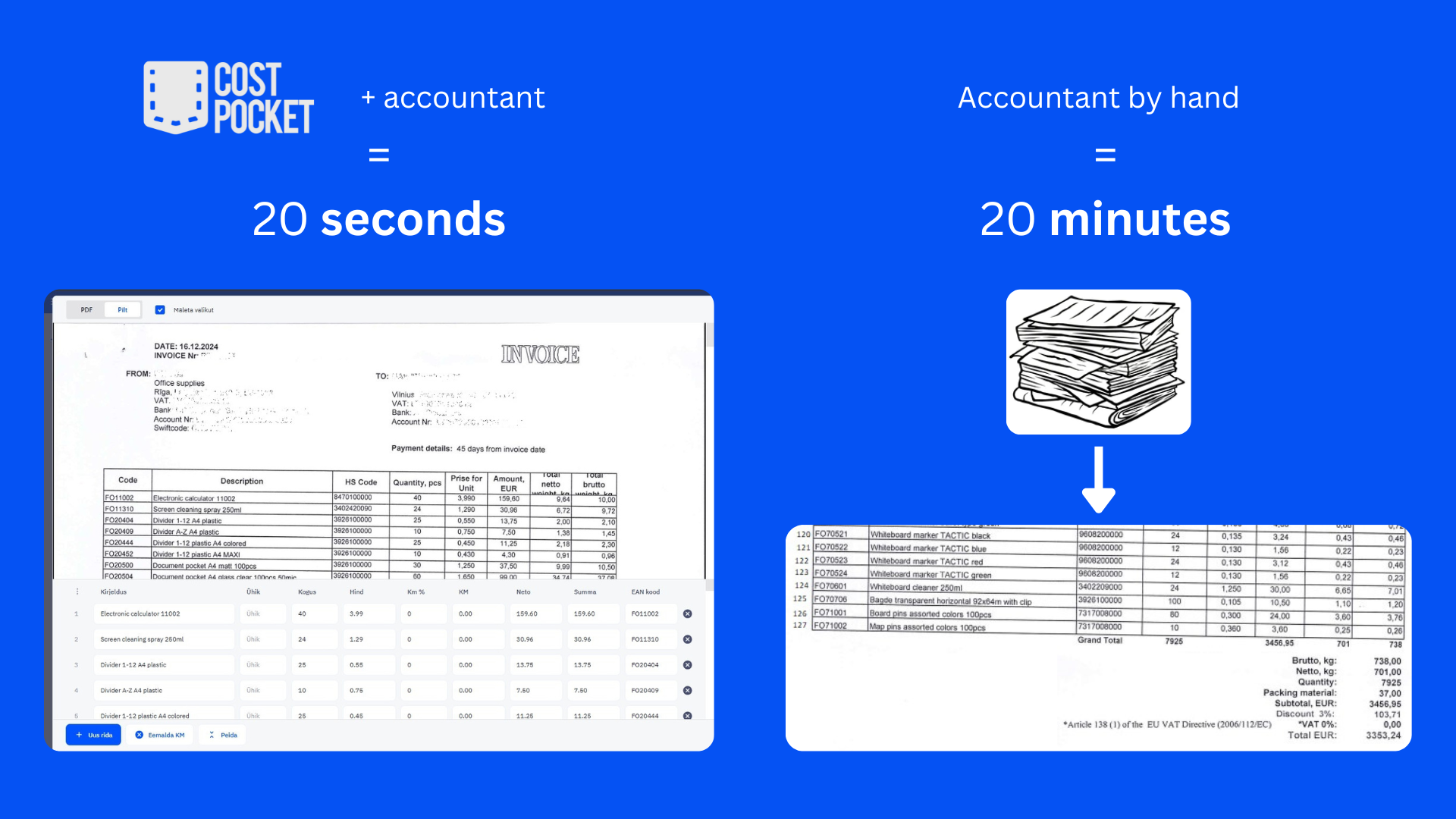Robots vs. Invoice Lines: The Battle is Over

Until recently, digitising invoice lines required a very patient accountant (and possibly a strong coffee). Now, CostPocket DIGI is here to take over the line-by-line grind — in just seconds. Want to save your brain for something more exciting than product codes and VAT rows? Let the robot do the boring stuff!
So, How Fast Is It?
Ever tried manually entering 127 invoice lines? Neither have we —
we like ourselves too much. But our robot? It lives for that kind
of thing. It can digitise names, codes, units, amounts, VAT,
discounts, rounding, and even emotional damage (okay, maybe not
that last one).

Example: how long would it take you to digitise 127 lines like here?
Who Needs This Sorcery?
If the company has a warehouse (or just a large stash of snack
supplies), this is for you. You probably want to know how much
stuff you’ve got, and that means getting line items from invoices
into your accounting system. Why do it manually when a robot can
do it with the enthusiasm of 10 accountants on espresso?
The Price Tag?
Surprise! It’s already included in DIGI standard pricing.
That’s right — no extra charge, no hidden fees, no shady upsells.
What Exactly Can It Do?
Well, it's pretty much the Swiss Army knife of invoice line
processing. It handles:
- Product names and codes
- Units, prices, amounts, and VAT
- Rounding, discounts, surcharges
- From 1 to 127 lines — probably even 200 if you ask nicely
How Does It Work?
We mixed AI, machine learning, and 13,832 scripts (yes, really)
into a powerful line-slaying bot. Then we validate everything:
check calculations, apply discounts, and make sure the numbers
make sense. It's like having a perfectionist robot accountant in
your pocket.
Does It Actually Work?
Absolutely. CostPocket now digitises over 45,000 documents with
lines and over half a million without. More than 700 companies
have already jumped on board. Average processing time? Just 7
seconds per document. Yes, a tiny bit slower than a regular scan,
but hey — magic takes time.
How to Get Started?
Just use the /document/lines endpoint in our API (see documentation).
It’s as straightforward as it sounds.
And that’s it! Let the robot handle the number crunching while you and your clients
get back to doing something more meaningful.
Got feedback? Love letters? Digital hugs? Send them to
[email protected].